Hussain Al Ahmad
Remote Sensing Based Crop Health Classification Using NDVI and Fully Connected Neural Networks
Apr 11, 2025Abstract:Accurate crop health monitoring is not only essential for improving agricultural efficiency but also for ensuring sustainable food production in the face of environmental challenges. Traditional approaches often rely on visual inspection or simple NDVI measurements, which, though useful, fall short in detecting nuanced variations in crop stress and disease conditions. In this research, we propose a more sophisticated method that leverages NDVI data combined with a Fully Connected Neural Network (FCNN) to classify crop health with greater precision. The FCNN, trained using satellite imagery from various agricultural regions, is capable of identifying subtle distinctions between healthy crops, rust-affected plants, and other stressed conditions. Our approach not only achieved a remarkable classification accuracy of 97.80% but it also significantly outperformed conventional models in terms of precision, recall, and F1-scores. The ability to map the relationship between NDVI values and crop health using deep learning presents new opportunities for real-time, large-scale monitoring of agricultural fields, reducing manual efforts, and offering a scalable solution to address global food security.
Analysing Osteoporosis Detection: A Comparative Study of CNN and FNN
Oct 11, 2024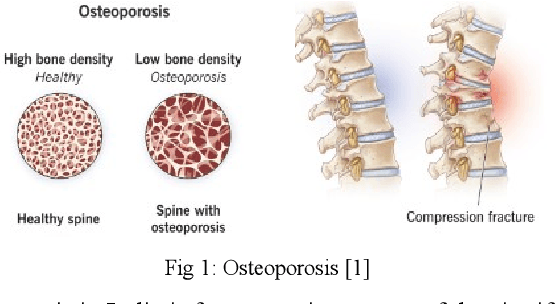

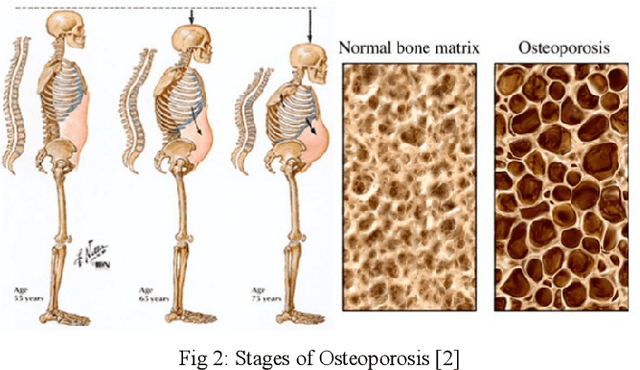
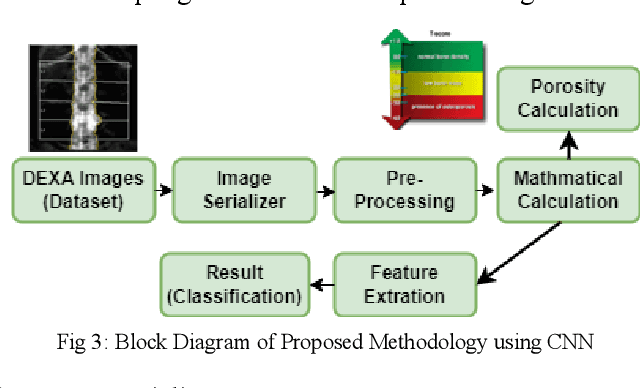
Abstract:Osteoporosis causes progressive loss of bone density and strength, causing a more elevated risk of fracture than in normal healthy bones. It is estimated that some 1 in 3 women and 1 in 5 men over the age of 50 will experience osteoporotic fractures, which poses osteoporosis as an important public health problem worldwide. The basis of diagnosis is based on Bone Mineral Density (BMD) tests, with Dual-energy X-ray Absorptiometry (DEXA) being the most common. A T-score of -2.5 or lower defines osteoporosis. This paper focuses on the application of medical imaging analytics towards the detection of osteoporosis by conducting a comparative study of the efficiency of CNN and FNN in DEXA image analytics. Both models are very promising, although, at 95%, the FNN marginally outperformed the CNN at 93%. Hence, this research underlines the probable capability of deep learning techniques in improving the detection of osteoporosis and optimizing diagnostic tools in order to achieve better patient outcomes.
Advancements in Ship Detection: Comparative Analysis of Optical and Hyperspectral Sensors
Oct 11, 2024

Abstract:In marine surveillance, applications span military and civilian domains, including ship detection, marine traffic control, and disaster management. Optical and hyperspectral satellites are key for this purpose. This paper focuses on ship detection and classification techniques, particularly comparing optical and hyperspectral remote sensing approaches. It presents a comprehensive analysis of these technologies, covering feature extraction, methodologies, and their suitability for different missions. The study highlights the importance of selecting the right sensor aligned with mission objectives and conditions, aiming to improve detection accuracy through integrated strategies. The paper examines the strengths and limitations of both technologies in various maritime applications, enhancing understanding of their usability in different operational scenarios.
Applications of Knowledge Distillation in Remote Sensing: A Survey
Sep 18, 2024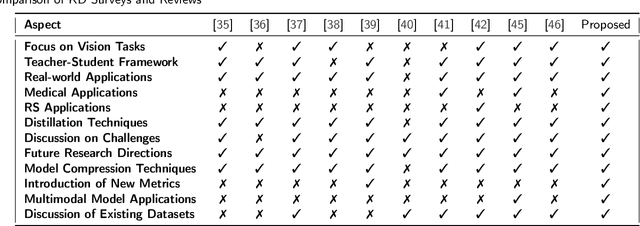
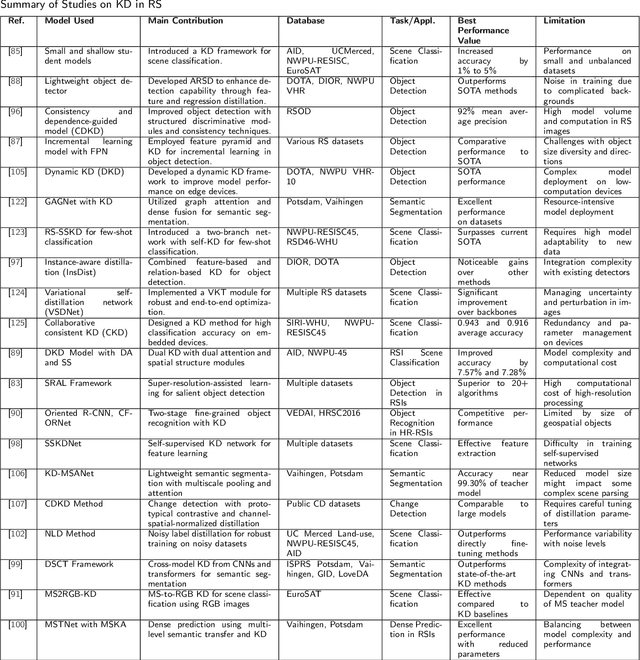
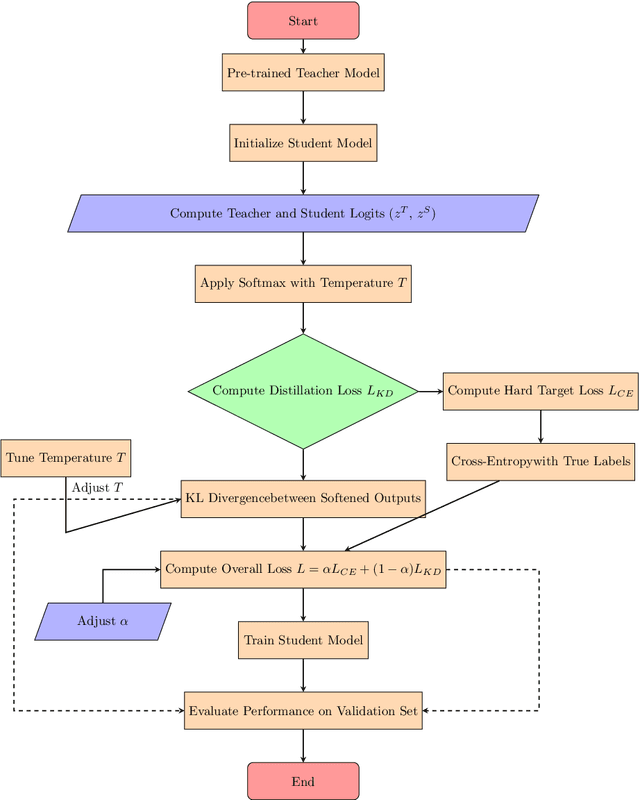
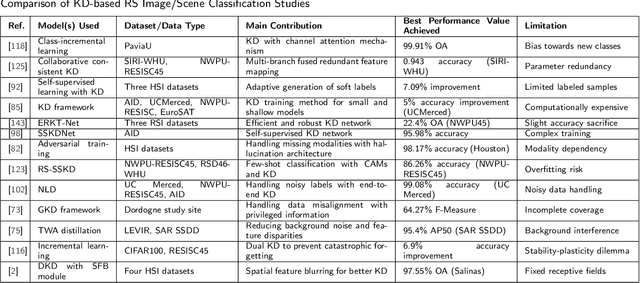
Abstract:With the ever-growing complexity of models in the field of remote sensing (RS), there is an increasing demand for solutions that balance model accuracy with computational efficiency. Knowledge distillation (KD) has emerged as a powerful tool to meet this need, enabling the transfer of knowledge from large, complex models to smaller, more efficient ones without significant loss in performance. This review article provides an extensive examination of KD and its innovative applications in RS. KD, a technique developed to transfer knowledge from a complex, often cumbersome model (teacher) to a more compact and efficient model (student), has seen significant evolution and application across various domains. Initially, we introduce the fundamental concepts and historical progression of KD methods. The advantages of employing KD are highlighted, particularly in terms of model compression, enhanced computational efficiency, and improved performance, which are pivotal for practical deployments in RS scenarios. The article provides a comprehensive taxonomy of KD techniques, where each category is critically analyzed to demonstrate the breadth and depth of the alternative options, and illustrates specific case studies that showcase the practical implementation of KD methods in RS tasks, such as instance segmentation and object detection. Further, the review discusses the challenges and limitations of KD in RS, including practical constraints and prospective future directions, providing a comprehensive overview for researchers and practitioners in the field of RS. Through this organization, the paper not only elucidates the current state of research in KD but also sets the stage for future research opportunities, thereby contributing significantly to both academic research and real-world applications.
Enhancing Plant Disease Detection: A Novel CNN-Based Approach with Tensor Subspace Learning and HOWSVD-MD
May 30, 2024


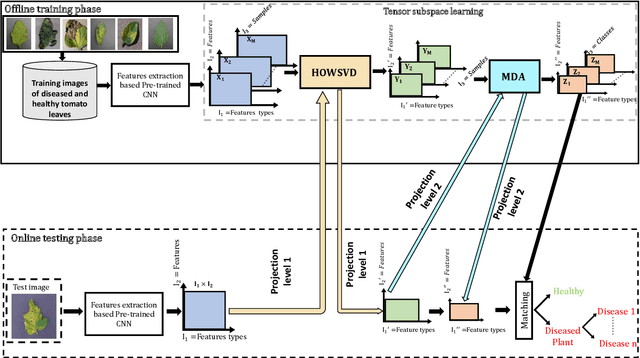
Abstract:Machine learning has revolutionized the field of agricultural science, particularly in the early detection and management of plant diseases, which are crucial for maintaining crop health and productivity. Leveraging advanced algorithms and imaging technologies, researchers are now able to identify and classify plant diseases with unprecedented accuracy and speed. Effective management of tomato diseases is crucial for enhancing agricultural productivity. The development and application of tomato disease classification methods are central to this objective. This paper introduces a cutting-edge technique for the detection and classification of tomato leaf diseases, utilizing insights from the latest pre-trained Convolutional Neural Network (CNN) models. We propose a sophisticated approach within the domain of tensor subspace learning, known as Higher-Order Whitened Singular Value Decomposition (HOWSVD), designed to boost the discriminatory power of the system. Our approach to Tensor Subspace Learning is methodically executed in two phases, beginning with HOWSVD and culminating in Multilinear Discriminant Analysis (MDA). The efficacy of this innovative method was rigorously tested through comprehensive experiments on two distinct datasets, namely PlantVillage and the Taiwan dataset. The findings reveal that HOWSVD-MDA outperforms existing methods, underscoring its capability to markedly enhance the precision and dependability of diagnosing tomato leaf diseases. For instance, up to 98.36\% and 89.39\% accuracy scores have been achieved under PlantVillage and the Taiwan datasets, respectively.
Attention based Dual-Branch Complex Feature Fusion Network for Hyperspectral Image Classification
Nov 02, 2023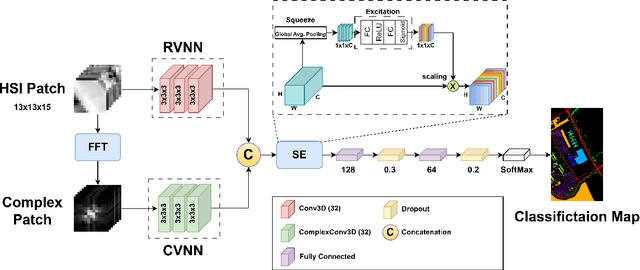
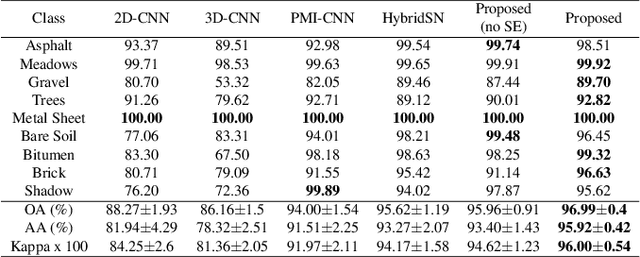
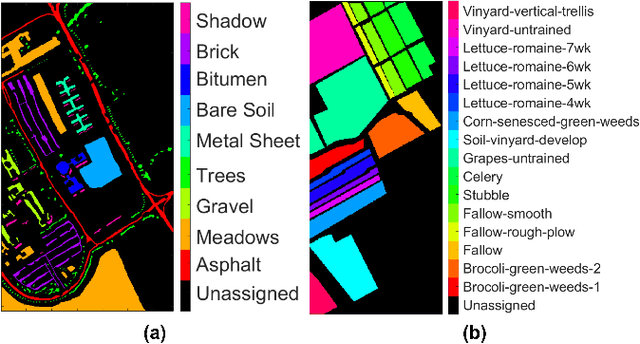
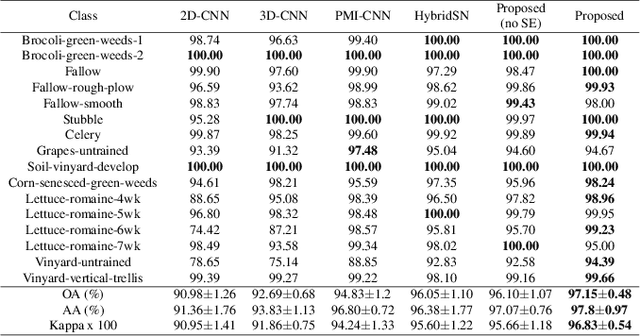
Abstract:This research work presents a novel dual-branch model for hyperspectral image classification that combines two streams: one for processing standard hyperspectral patches using Real-Valued Neural Network (RVNN) and the other for processing their corresponding Fourier transforms using Complex-Valued Neural Network (CVNN). The proposed model is evaluated on the Pavia University and Salinas datasets. Results show that the proposed model outperforms state-of-the-art methods in terms of overall accuracy, average accuracy, and Kappa. Through the incorporation of Fourier transforms in the second stream, the model is able to extract frequency information, which complements the spatial information extracted by the first stream. The combination of these two streams improves the overall performance of the model. Furthermore, to enhance the model performance, the Squeeze and Excitation (SE) mechanism has been utilized. Experimental evidence show that SE block improves the models overall accuracy by almost 1\%.
 Add to Chrome
Add to Chrome Add to Firefox
Add to Firefox Add to Edge
Add to Edge